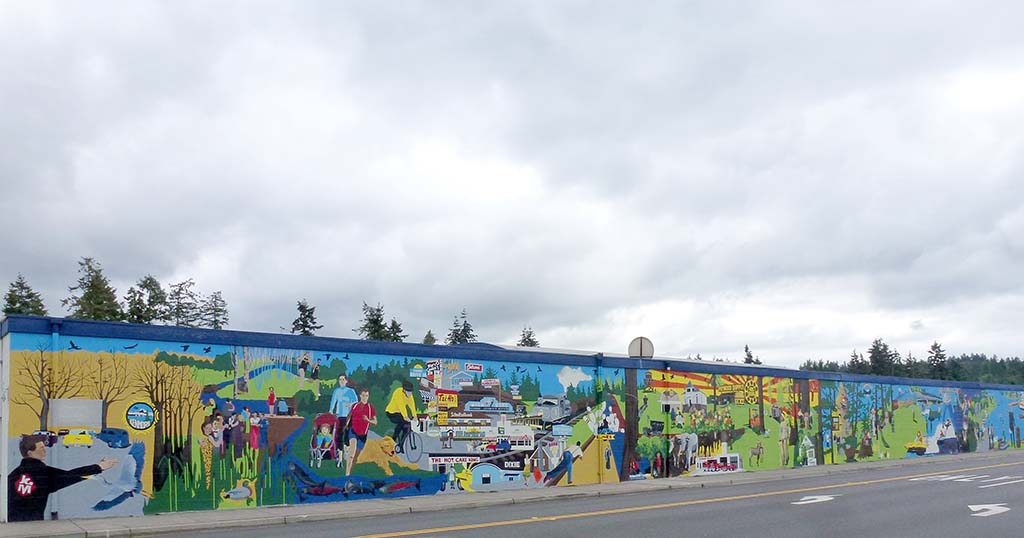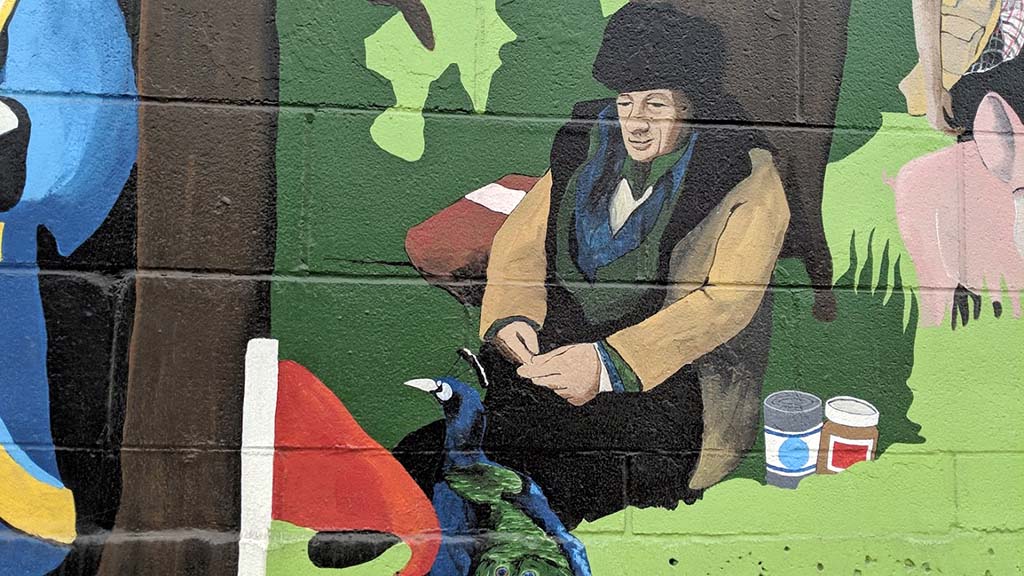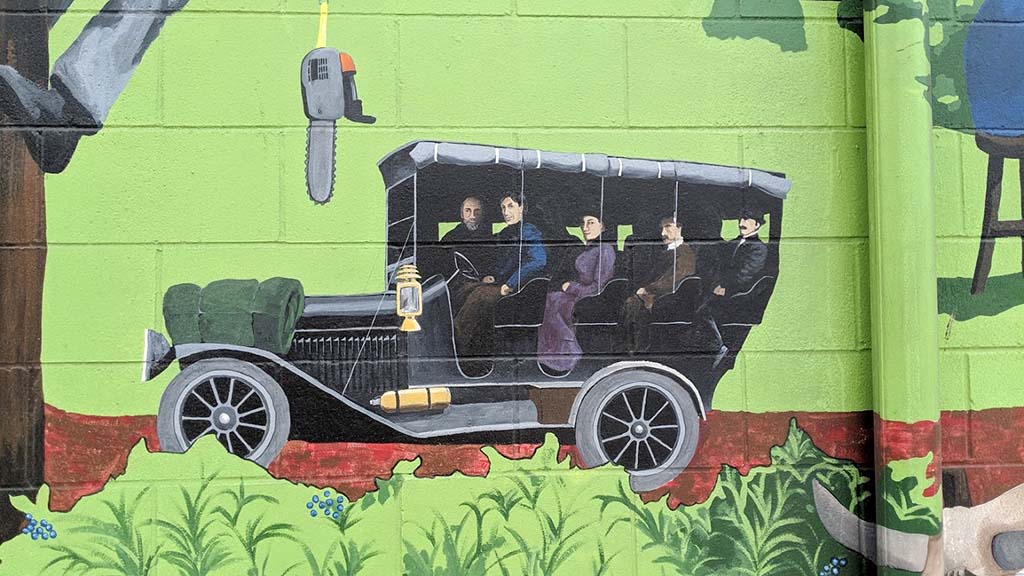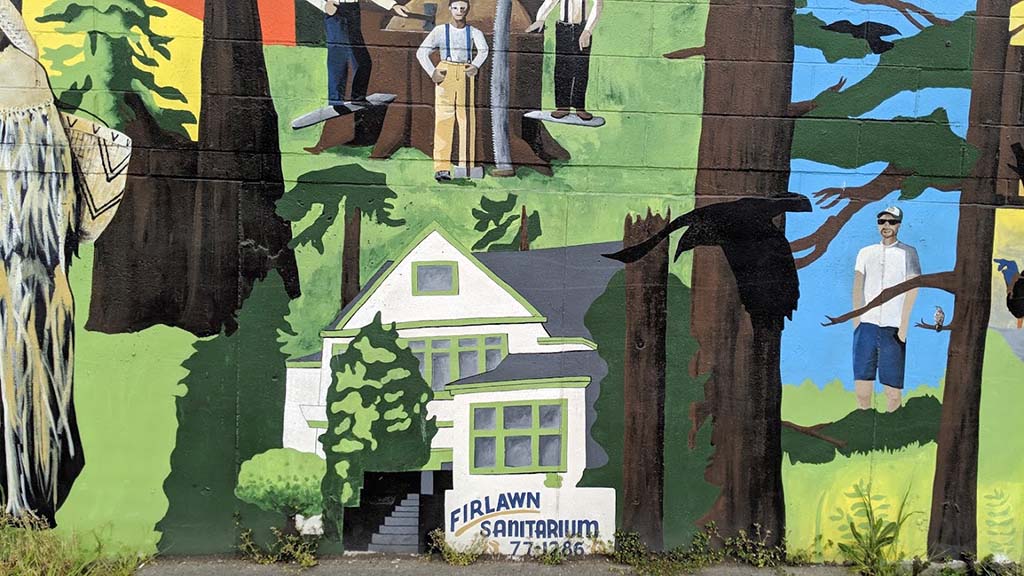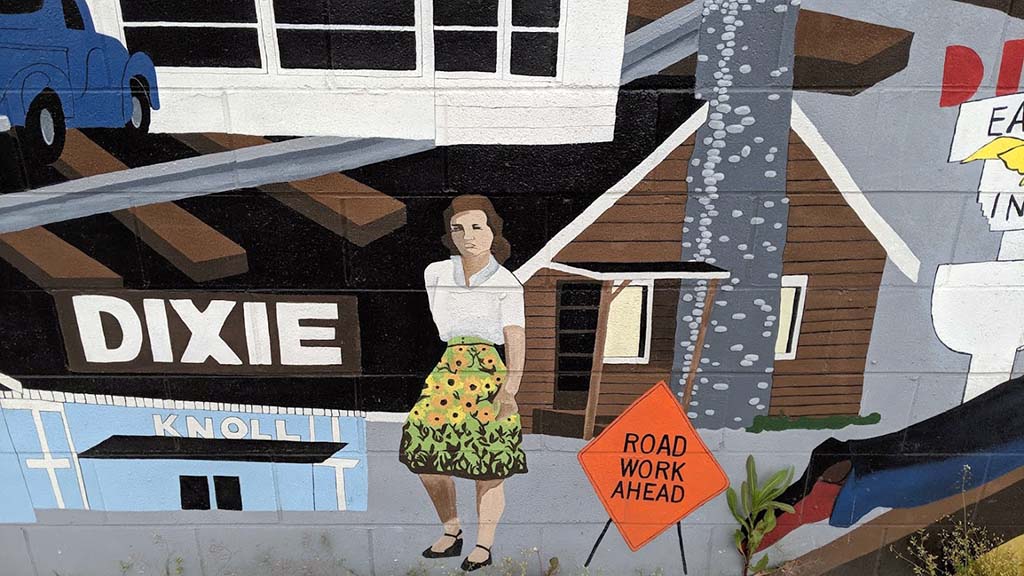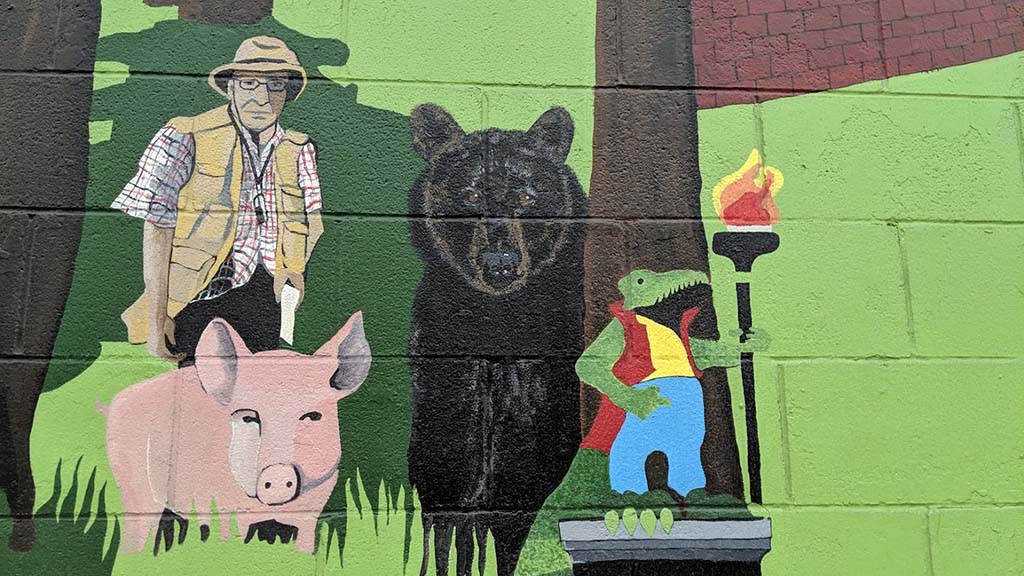-
Kenmore Mural
Bothell Way and 73rd Avenue NE
Bothell Way and 73rd Avenue NE
The Kenmore Mural Project began with a simple exchange of emails between the City of Kenmore and St. Vincent de Paul staff in May of 2015. Completed in the summer of 2016, the mural is 188 feet long by 12 feet tall and is considered to be the longest mural in King County, and one of the longest murals in the state of Washington. The mural tells the cultural and historical narrative of the City of Kenmore, deepening the sense of place for community members and visitors.
See if you can find these scenes:
— The man who lived under a tree, Alvin Erho, lived in a cabin at Kenmore Trailer Park. McDonalds bought the property for its restaurant and the cabin was torn down. Alvin then lived in a container box behind Murphy’s Furniture Store, later under a pallet behind what is now the RiteAid store, and finally under a big fir tree on NE 181st Street just east of 68th Avenue NE. The peacock and red flag in the picture represent Inglewood Golf Club — peacocks were kept on the adjoining property and their screech usually sounded like the word help.
— Bus service for Kenmore residents began in 1913 when Bothell dairyman Elmer Ross founded Bothell Auto Stage Company. The chainsaw hanging down represents logging. The blueberry bushes at the bottom represent the U-pick blueberry farms that were in Kenmore.
— The rooster represents the animals raised on the Inglewood Golf Course grounds. The mink represents a mink farm once located in southern Kenmore off of modern-day Juanita Drive. The gentleman is Watson Squire, the man who developed the area that is central to Kenmore today.
— The men at the top were cutting down a tree, using spring boards to stand up higher on the trunk. In the 1930s, Firlawn Sanitarium, located on Lockwood Villa Road (later NE 175th Street), offered private medical treatment specializing in psychiatry. Famous author Thomas Wolfe was a patient in 1938.
— The Dixie Inn was a Kenmore restaurant in the early 1900’s. During Prohibition, restaurants, road-houses and dance halls commonly called “bottle clubs” sprang up along Bothell Way, giving Kenmore its reputation as Roadhouse Strip during the 1930’s and ‘40s.
— This gentleman is a Kenmore resident who was known to walk around Kenmore taking photos. The black bear represents the bear sightings we have periodically in this area. The crocodile represents the statue that was formerly located next to the old Kenmore stone business called Crocodile Rocks. The pig represents the animals that were raised on the Inglewood Golf Club grounds.
Proceed to NE Bothell Way and turn east – look for the signs for Snapdoodle Toys.
